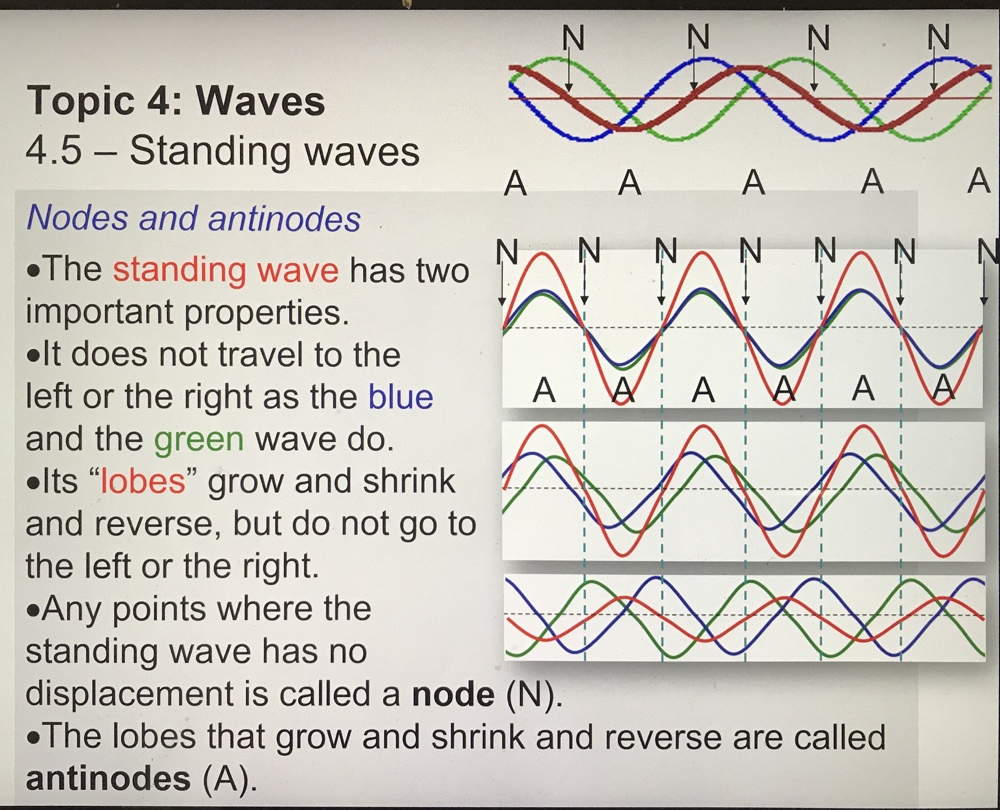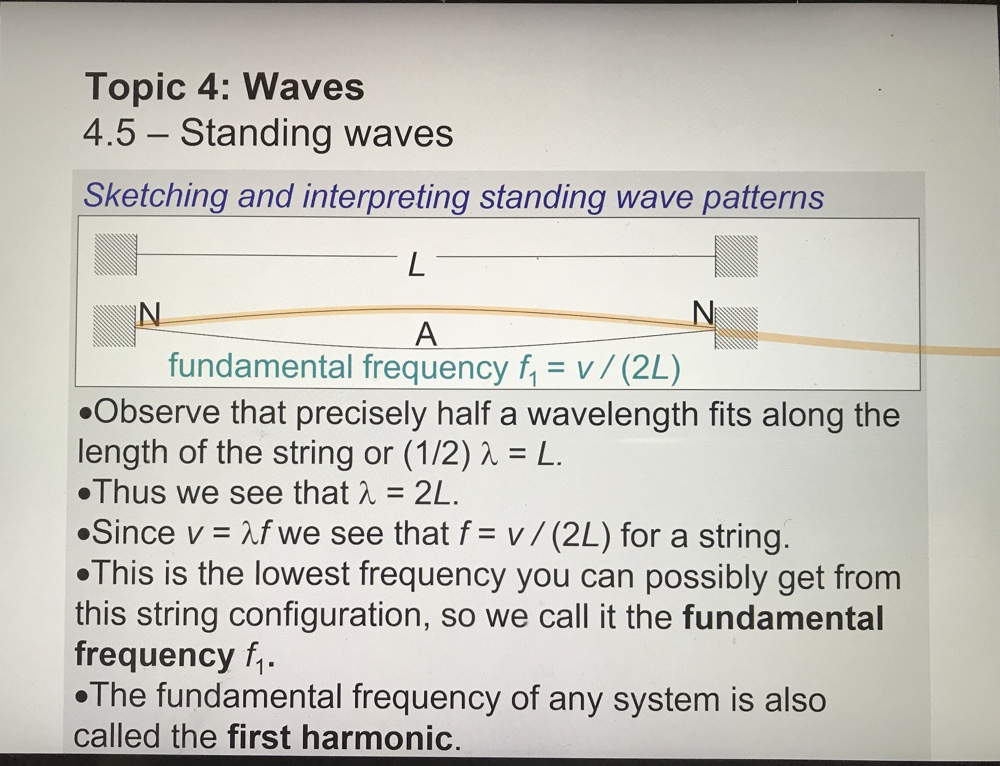This week we built on our previous discussion about the principal of superposition to explain how standing waves are produced on strings and pipes.

In relation to waves on string (transverse waves) and vibration of air molecules to produce sound (longitudinal waves), we discussed points of no displacement (nodes) and points of maximum displacement in the positive and negative x-direction (antinodes), and how these correspond to destructive and constructive interference respectively.

We further looked at boundary conditions for the formation of standing wave patterns and how frequency of vibration determines the type of harmonic formed. Students also learned how to sketch standing wave patterns for different harmonics in both strings and pipes.

